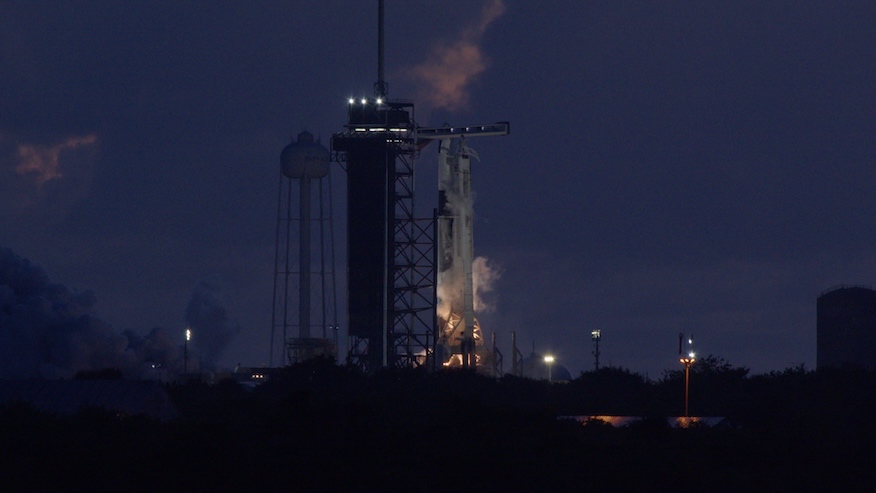
The SpaceX and Polaris Dawn teams checked a couple of important boxes before getting ready to launch the historic commercial mission.
A little less than a week after arriving at Florida’s Space Coast, the four astronauts went through all the activities they experience on launch day, including suiting up and climbing aboard the Crew Dragon Resilience , which will be his home for about five days. mission
After the activity known as a dry suit test, SpaceX cleared the pad at Launch Complex 39A to perform a static fire test of its Falcon 9 rocket. The T-0 for ignition occurred at 6:38 am EDT (1038 UTC).
The engine fire lasted about 11 seconds in total. SpaceX engineers have taken the data collected from the operation and will review it as they make their final prelaunch preparations.
The Falcon 9 first stage booster that supports this mission, B1083 in the SpaceX fleet, will make its fourth trip into space when it launches no earlier than Tuesday morning. He previously launched the Crew-8 mission aboard the Dragon Endeavor spacecraft in March, as well as two Starlink flights.
The SpaceX drone that will be used to catch the booster after its pending launch, “A Shortfall of Gravitas,” took off from Port Canaveral on Saturday afternoon.
Polaris Dawn and SpaceX completed a full test of launch day activities prior to liftoff on Tuesday. pic.twitter.com/qz2RD5bnVM
– SpaceX (@SpaceX) August 25, 2024
The Polaris Dawn mission will take the four crew members, Jared Isaacman, Scott “Kidd” Poteet, Sarah Gillis and Anna Menon, further from the humans who walked from Apollo 17 in 1972 and witnessed the first commercial spacewalk.
It comes after more than two and a half years of development work, testing and training at SpaceX and NASA facilities.
“SpaceX and the teams and crews, with their help, continue to push the envelope of what it takes to go to the Moon and Mars. We take the responsibility that has been entrusted to us to fly the crew and return them to home safely,” said William Gerstenmaier, SpaceX’s vice president of Build and Flight Reliability, during a prelaunch briefing. “Space flight is not easy. Our mission now is to safely launch Polaris, support its multi-day mission and return them home to their families and friends.
This is SpaceX’s second static fire of the month, following a similar test on the first stage booster, B1085, which will be used to launch two people on the Crew-9 mission to the International Space Station. On Saturday, NASA determined that it will send only two people to advance to orbit on this mission to preserve room for NASA astronauts Butch Wilmore and Suni Williams to return home.

